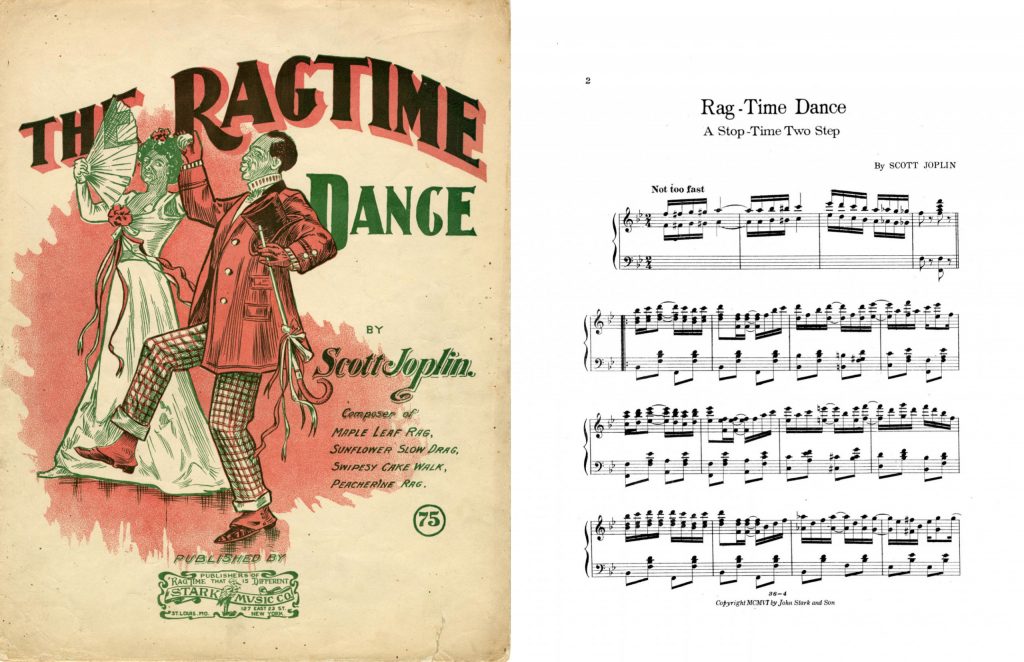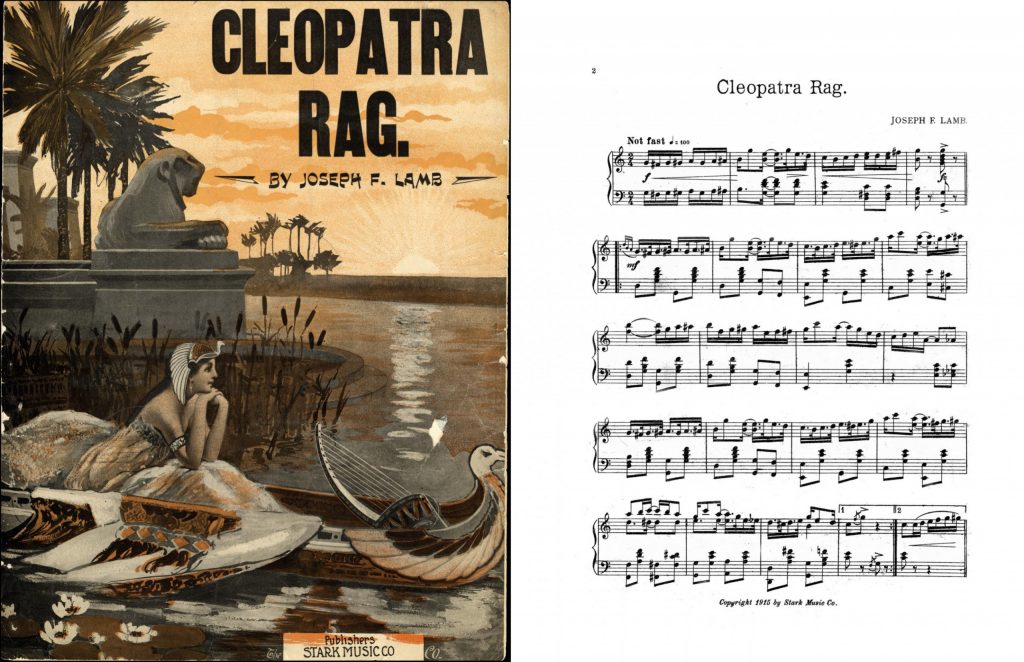Ragtime is a genre of music created by Black pianists that was popular between 1890 and 1920. Known by such a name due to its highly syncopated nature (which was originally referred to as “ragging the time”), ragtime emerged initially in the Mississippi Valley as bar, cabaret, and club music played by “piano-thumping… black piano professors” (1) that was mostly improvisatory. This early ragtime was referred to as jig music, and was all but shunned by white populations. During the Chicago World Fair, many Black jig piano players were hired to play music written by white composers at Fair events, but they were not allowed to play their own music. As a result, they would play in the clubs, saloons, and other social spaces around the perimeter of the fair, which is where their music thrived (1).
It wasn’t until 1895 when the first ragtime tune, “La Pas La Mas”, was transcribed and actually published, starting a new subgenre within ragtime known as classic rag (2). Classic rag was published as sheet music and was not intended to be improvised off of; it was designed to be played exactly as written. Arguably the most famous classic rag composer was Scott Joplin, with his “Maple Leaf Rag” being the most popular of his works (3).

Like many composers of classic rag, Joplin was initially a jig pianist who then ventured into classic rag. In 1898, he first began submitting scores to publishing companies, but it wasn’t until meeting John Stillwell Stark, a white music publisher and music store owner, and playing for him in his store in 1899 that he entered a publishing contract. For Stark, this was the first Black and first ragtime composer he conducted business with (3), and this proved to be extremely profitable. The “Maple Leaf Rag”, Joplin’s first work published by Stark, is considered one of the first hit songs on sheet music and sold over 500,000 copies in the first 10 years of its publication (4).
With Joplin’s massive success, Stark decided that if he were going to sell more ragtime music, he would focus on publishing classic rag. Ragtime was a largely Black genre, and, predictably, Stark did not want to be seen as someone who particularly uplifted Black voices, and said that he “[advocated] no class of music”, but alternatively a publisher popular music and anything he thought to be “interesting or useful”, and ragtime just so happened to fit into those boxes. Stark didn’t just limit his classic rag roster to Joplin, but to other accomplished names like James Scott and Joseph Francis Lamb, as well as several of Joplin’s protégés. This turned his company into the primary supporter of and place to purchase ragtime music (2).

One result of the Stark Music Company churning out works by a star-studded list of ragtime composers was the spread of ragtime into white households and communities as a palatable morsel of Black American culture. The acceptance of ragtime seems to have been just another example of Black culture being appropriated and taken advantage of among the many that comprise American music history. One could argue that Stark’s opinion of neutrality rather than support could have been a factor in this, but I doubt Stark was influential enough himself to have significantly challenged his white audience’s overwhelmingly racist views.
Sources
(1) “From Piano Thumping to the Concert Stage: The Rise of Ragtime.” Music Educators Journal 59, no. 8 (1973): 53–56. https://doi.org/10.2307/3394278.
(2) Tichenor, Trebor Jay. “John Stillwell Stark, Piano Ragtime Publisher: Readings from ‘The Intermezzo’ and His Personal Ledgers, 1905-1908.” Black Music Research Journal 9, no. 2 (1989): 193–204. https://doi.org/10.2307/779423.
(3) Reed, Addison. “Scott Joplin, Pioneer: Part 2.” The Black Perspective in Music 3, no. 3 (1975): 269–77. https://doi.org/10.2307/1214012.
(4) “John Stark, 1841-1927.” The Library of Congress. LOC. Accessed October 19, 2022. https://www.loc.gov/item/ihas.200035817/.
(5) Joplin, Scott. “Rag-Time Dance”. Sheet Music Consortium. St. Louis, MO: Stark Music Co., 1906. https://scholarsjunction.msstate.edu/cgi/viewcontent.cgi?article=3681&context=cht-sheet-music.
(6) Lamb, Joseph F. “Cleopatra Rag”. Sheet Music Consortium. St. Louis, MO: Stark Music Co., 1915. https://scholarsjunction.msstate.edu/cgi/viewcontent.cgi?article=3482&context=cht-sheet-music.
